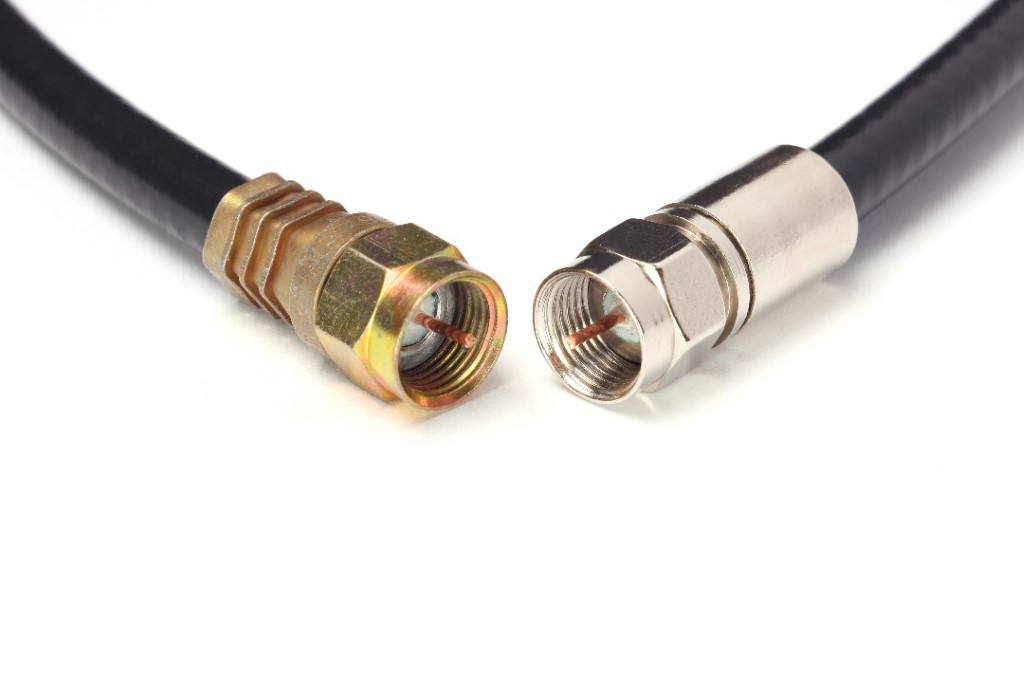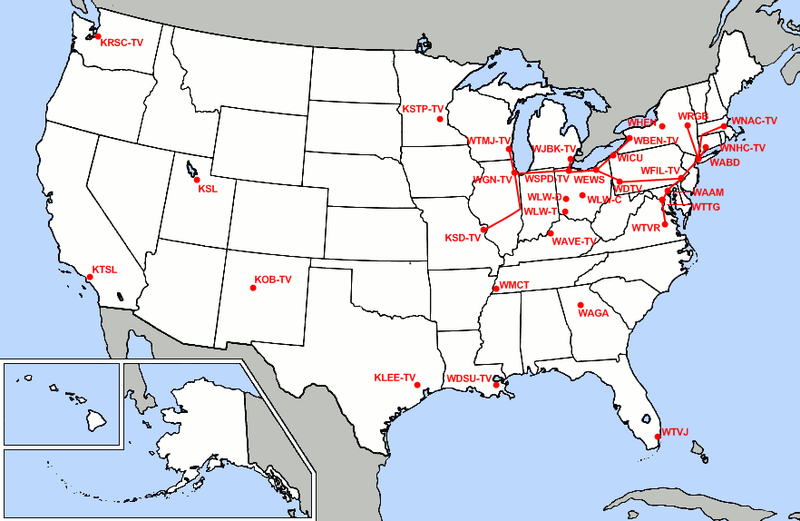5 Classic American Pranks (and a British One)
Ever since rebellious colonists dressed as Native Americans and vandalized the beverages of the occupying British forces, we’ve been a country that loves elaborate pranks. Some pranks achieve infamy, becoming a kind of Prank Everest that other creators of shenanigans aspire to emulate. We look back at five of the greats, plus one British stand-out (because, you know, the tea).
1. The Max Headroom Intrusion (1987)
Thirty-two years ago this week, Max Headroom appeared on television in Chicago. That wasn’t a terribly unusual event in 1987, as the AI TV host character (played by Matt Frewer) had debuted two years earlier and popped up in everything from music videos to Coke commercials to an ABC TV series. This time, the appearance came via pranksters who hijacked the signals of WGN-TV and WTTW, two Chicago stations. The first intrusion, during The Nine O’Clock News on WGN, featured a person in a Max Headroom mask and lasted for 28 seconds until engineers shut it down by changing the frequency of the transmitter (which was located atop the John Hancock Building).
The signal interruption on WTTW lasted 90 seconds during an episode of Doctor Who, and included all manner of weirdness. The masked Max made reference to Chicago sportscaster Chuck Swirsky, Pepsi, and WGN’s origin as the “World’s Greatest Newspaper.” He also exposed his bottom to be spanked with a flyswatter. It took longer for the engineers to take down the signal, as no one was on duty at the (then) Sears Tower transmitting station at the time.
The intrusion made national news and remains a touchstone in the hacking community. To this day, the perpetrators remain unknown.
2. The War of the Worlds (1938)
The Saturday Evening Post has reported extensively on this one. On October 30, 1938, Orson Welles and company broadcast a radio drama based on the H.G. Wells classic The War of the Worlds. However, the storytelling technique that they used was that of a series of news broadcasts interrupting “regular” music programming so that it sounded like actual news. While reports of actual panic vary, a good chunk of listeners did believe that a Martian invasion was on. As the program reached the end, the New York Police showed up to shut the production down. Welles gave a tongue-in-cheek apology, but the legend would live on. Just two years later, Welles would begin shooting his first feature film, the classic Citizen Kane.
3. The Society for Indecency to Naked Animals (1959)
We’re sorry to report that The Post missed the boat on this one. Alan Abel, a writer and inveterate hoaxster who put together pranks on a grand scale, pitched a story to The Saturday Evening Post that was originally satire about a fictional organization with the slogan “A nude horse is a rude horse.” When the editors rejected it, Abel reworked the story into an elaborate media hoax; he sent a number of press releases out about the Society, a parody of moral panic groups that implored the public to dress and cover nude animals. Abel recruited multi-talented comedy legend Buck Henry to pretend to be G. Clifford Prout, Jr., the fictional head of the equally fictional group. The prank lasted for years, beginning with wide notice during a segment on The Today Show in May of 1959 and hitting a kind of zenith as Henry appeared in a pre-recorded interview package as Prout on The CBS Evening News in 1962. Members of CBS anchor Walter Cronkite’s staff recognized Henry, and the esteemed newsman (at the time a very steamed newsman) called Abel himself to read him the riot act. Time magazine ran a piece on the hoax in 1963, and Abel recounted its origins and spread in his 1966 book, The Great American Hoax.
4. The Great Rose Bowl Hoax (1961)
A story on The Great Rose Bowl Hoax from KRQE
A school attempting to prank the opposing team or their fans during a game is nothing new. A school that isn’t involved in the game, and yet somehow manages to prank both teams AND network television? Now that’s something else. That went down during the 1961 Rose Bowl game between the Washington Huskies and the Minnesota Golden Gophers. The California Institute of Technology is very close to the Rose Bowl, which gave a group of enterprising students (“The Fiendish Fourteen”) the prime opportunity to pull off something brilliant. Future physicist and fantasy author Lyn Hardy pretended to be a reporter and interviewed the Huskies’ head cheerleader to get information about their half-time card-flip, in which the Washington side of the stadium would hold up cards that spelled out HUSKIES. Hardy and company swiped a copy of the instruction sheet from the cheerleaders, who were staying at the Caltech dorms, and then replaced the old sheets with their reworked copies. At halftime, when the Washington cheerleaders called for the cards to be raised, the cards showed the other side of the stadium, and 30 million viewers at home, one word: CALTECH.
The effort has been called the greatest college prank of all time. It has inspired similar efforts; in 1984, Caltech students rigged the scoreboard to show Caltech beating MIT, although the game was being played by UCLA and Illinois. Yale pulled off a similar prank in 2004, tricking a Harvard student section into holding up signs that spelled out “We Suck.” The pranksters also registered harvardsucks.org and posted a behind-the-scenes video of how they made it work.
5. MIT Creates Building-Sized Tetris (2012)
The Green Building, designed by Araldo Cossutta and I. M. Pei, is an iconic structure on the campus of the Massachusetts Institute of Technology. The building’s grid-like appearance invited the Holy Grail of hacks: could the building be turned into a game of Tetris? After a brief attempt in 2011, hackers installed wirelessly controlled LED lights in all the windows above the first floor that were controlled by a unit in front of the building. The effort, achieved on Campus Preview Weekend, allowed prospective students to play building-sized Tetris along with their future classmates.
Honourable Mention. Big Ben Goes Digital (1980)
From across the pond comes an April Fool’s Day classic. On April 1, 1980, the BBC broke news that iconic Big Ben was going to be converted into a digital clock. The BBC Japanese service went so far as to say that the clock hands would be sold to the first four listeners that called in with an offer. Of course, people were properly outraged. The 1980 bit has been revisited again and again over the years, with publications like The International Business Times putting their own spin on the gag.
Featured image: Max Headroom broadcast signal intrusion (Alamy).
Video Killed the Radio: The Birth of Networked TV
In the age of streaming, where content is available on every device from thousands of possible sources at every hour of the day, it can be easy to forget about all of the advances that had to be made in order to make video programming viewable by anyone that has access. One of the most important links in that chain was forged on January 11th, 1949, when KDKA-TV out of Pittsburgh made the first networked TV broadcast.
To get to how the original idea of networking happened, you have to go back to radio. Not so coincidentally, the first commercially licensed radio station in the U.S. was also KDKA. That was in 1920, and Pittsburgh was swiftly joined by radio stations in other cities like New York, Detroit, and Boston. As radio stations proliferated, entities that owned multiple stations began to consider ways that they could send programming from one point of origin to multiple stations in other locations.
By 1928, NBC established the first coast-to-coast radio network. They used phone lines for signal transmission, meaning that the stations had to be physically connected by the various series of lines across the country in order for it to work. This was the birth of “network affiliate” stations, which were generally individually owned and operated stations that paid in and agreed to broadcast the network’s programming interspersed with blocks of local programming.

Radio boomed, but the young media format of television faced more challenges. The original individual television stations broadcasted over the airwaves, just like radio. Reception for TV sets came via antennae, either the “rabbit ears” on top of the set or aerials on top of a home or building that ran the signal down into the set. Most broadcasts were live and local, with stations providing their own programming. Early recordings called kinescopes were circulated, often through the mail, allowing stations to play films or previously recorded shows. When the attempts to connect stations were made, the combination of sound and picture required a sturdier system for transmission than the “sound only” nature of radio. In 1929, Bell Telephone Laboratories (which was owned by AT&T) patented coaxial cable. It was originally intended to improve telephone service, but it ended up being a solid choice for television, capable of handling the much wider band needed.
AT&T started testing and laying cable in the late ’30s, beginning with a connection between New York and Philadelphia. Various media companies with visions of becoming networks began connecting television stations in different cities on the East Coast. NBC broadcast from New York City to Schenectady, New York in 1940; they followed with other broadcasts from New York City to Philadelphia and Schenectady, though not necessarily regularly, nor at the same time. AT&T completed a hook-up between New York and Washington, D.C. in 1946. By 1948, Boston and Baltimore were in on the act, with four networks (NBC, ABC, CBS, and DuMont) making television broadcasts between different cities.

On January 11, 1949, DuMont’s KDKA, originally known as WDTV, made the next big leap forward. Using a connection that now ran all the way to St. Louis, KDKA initiated a simultaneous live broadcast that was able to be carried on 13 other stations. This was a genuine network, as opposed to a series of connections. This set the basis for how television networks would operate for decades, with programs originating at a fixed location that are then carried down to all of the various local affiliates.
Since then, television has undergone constant evolution. DuMont faded by the late 1950s, leaving only three major networks until the arrival of Fox in 1986. We’ve gone from receiving signals in our house via antennae to having coaxial connections bring literal “cable” TV into our houses. That’s segued into such innovations as broadband, digital, and satellite connections. Of course, we’re now in the streaming age, wherein we can watch our programs on a number of devices that can run media from any number of broadcasting platforms. At such a time, when the technological horizon seems limitless, it’s good to remember that our daily watching convenience was driven by a spirit of invention that simply wanted two cities to be able to connect. They made it work, and then they opened up the world.